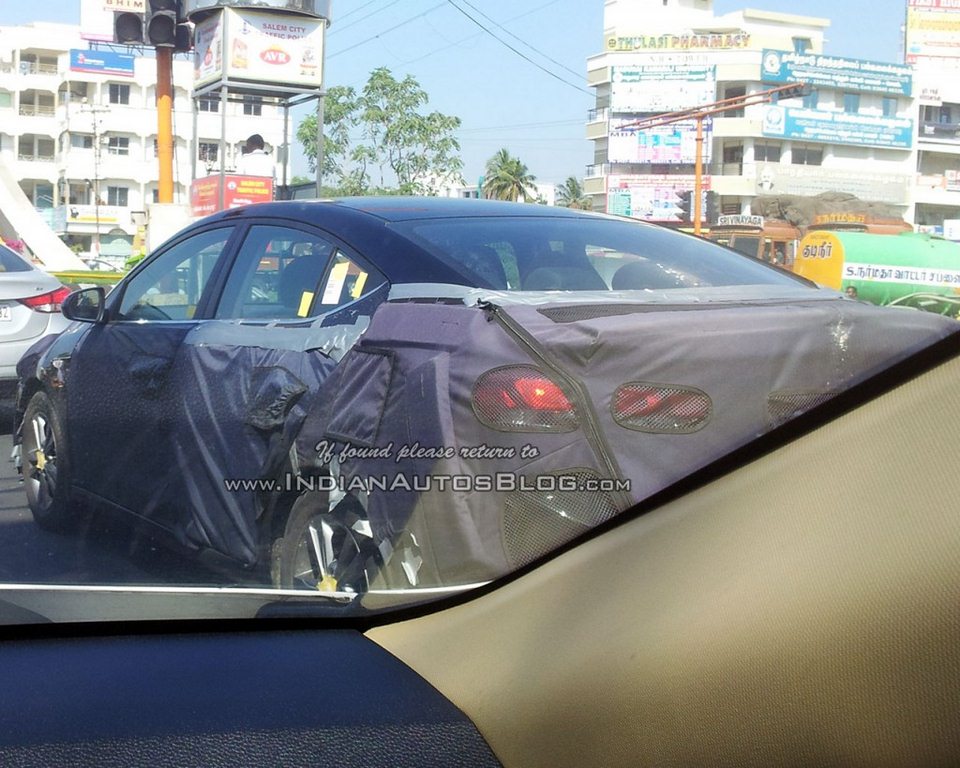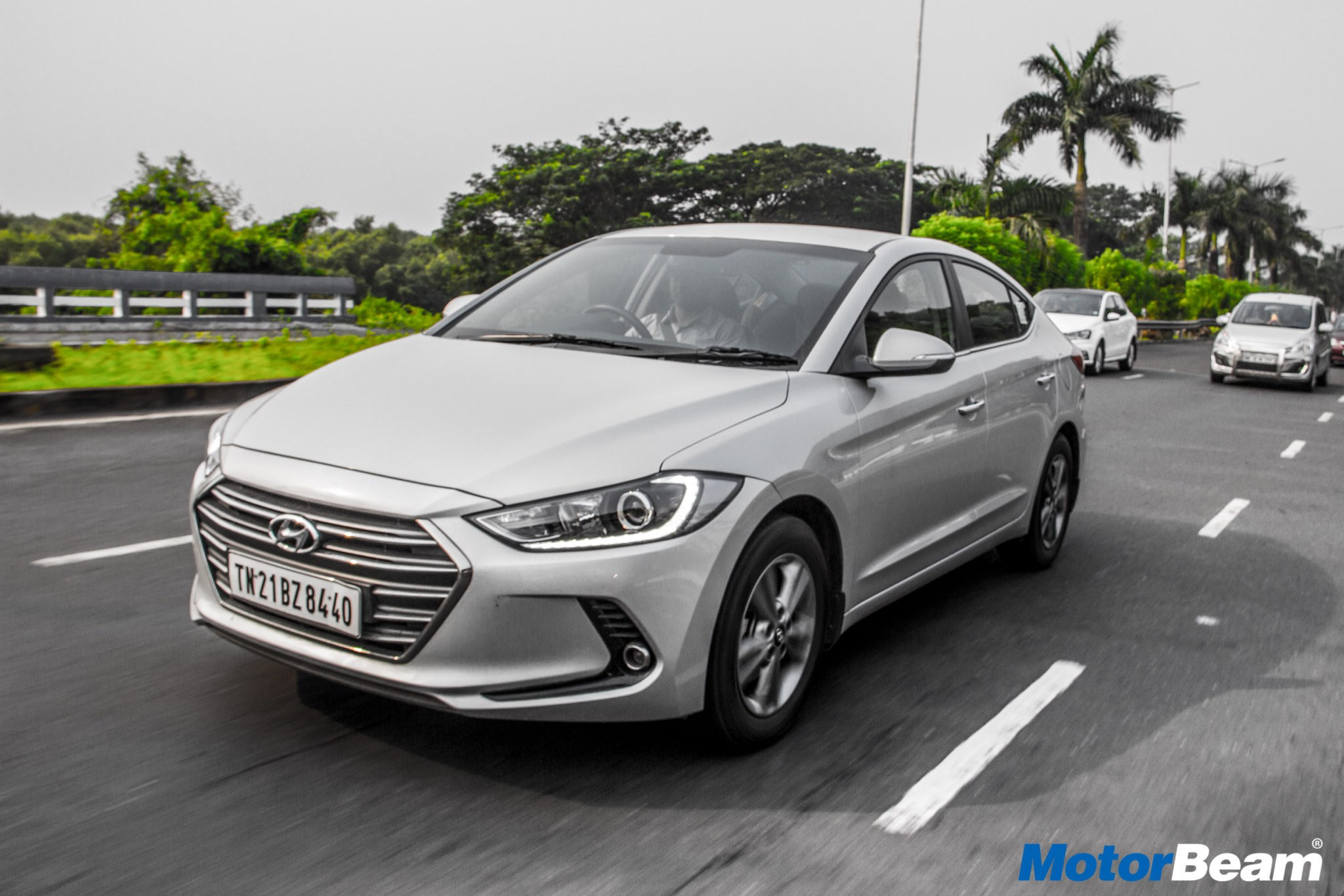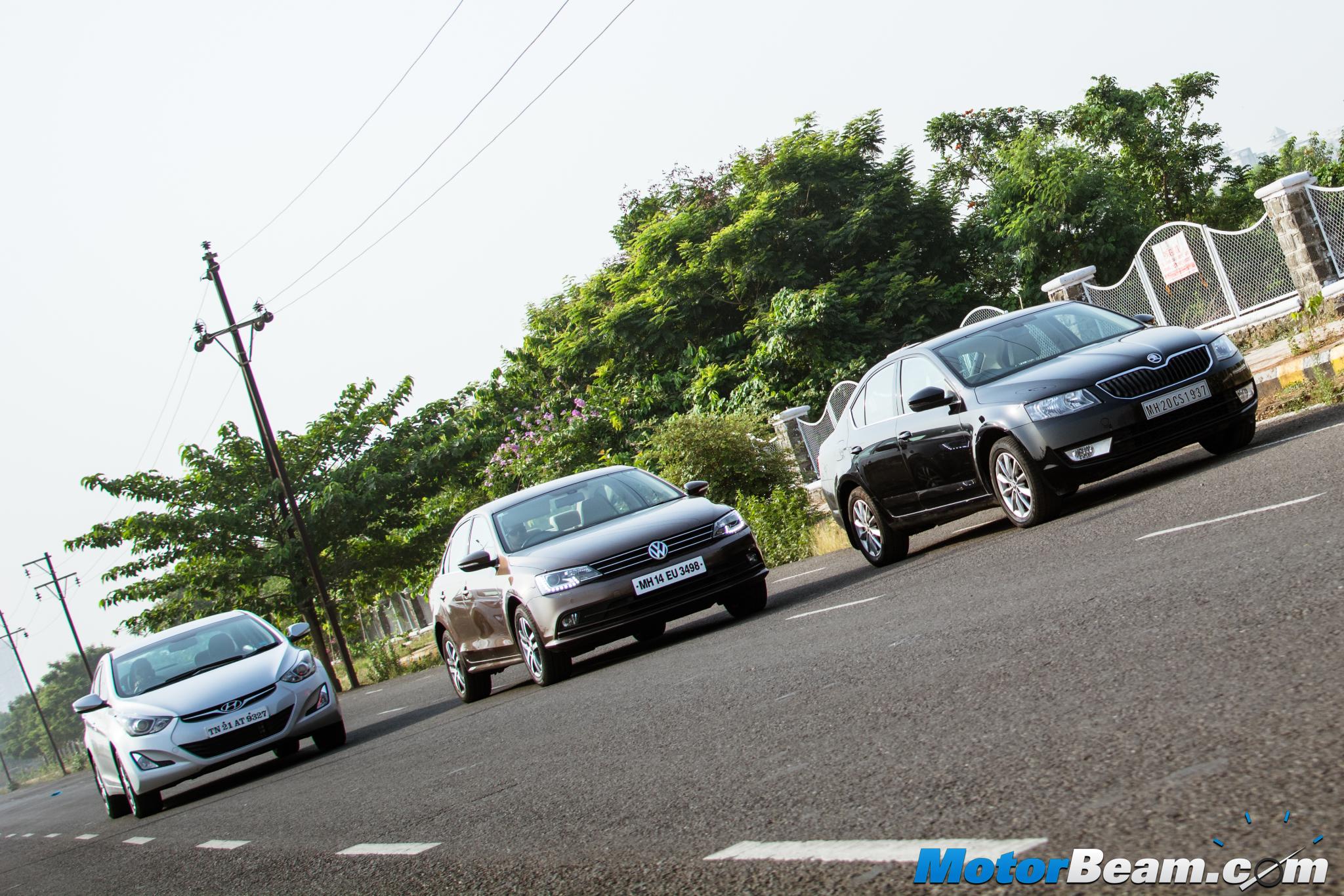The boot can swallow quite a lot of luggage
For entertainment purposes, you get a touchscreen infotainment system with the usual connectivity options like Apple CarPlay, USB, Bluetooth, Aux-IN, etc. The system is easy to use and you can pair it to your phone in a jiffy. Sound quality isn’t very good, but is enough to satisfy most users. Navigation works well too and there’s also a reverse camera on offer which offers fine visibility during the day but in the dark, its performance isn’t all that great.
Performance is good enough for day-to-day driving
The automatic transmission is a 6-speed torque converter unit
While the Hyundai Elantra petrol gets a 2.0-litre engine, the diesel version gets the same 1.6-litre unit that is shared with the Creta and Verna and it puts out 126 HP of power and 259 Nm of torque and comes matched to a 6-speed auto box in our case. The power and especially the torque is much lower than what rivals like the Skoda Octavia offer but is thankfully better than the Toyota Corolla Altis. The Elantra never really feels underpowered but power delivery isn’t very exciting either. It has satisfactory performance and won’t thrill you in any manner.
The driving modes do little to change the power delivery from the engine
The diesel engine is very refined and NVH levels in the car are also very good. You get different driving modes like Normal, Eco and Sport and I tried all of them and honestly didn’t find much difference between them and ended up using the car in Eco mode all the time. When you’re feathering the throttle, the car picks up pace in a steady manner but when you mash the throttle, it takes some time for it to downshift and then gather speeds. The 6-speed gearbox is a smooth unit but sometimes during aggressive driving, takes a second or two to downshift. On the highways, fuel efficiency goes up to 13-14 km/l but in the city it drops to 9 km/l which isn’t very great considering that this is a 1.6-litre engine.




